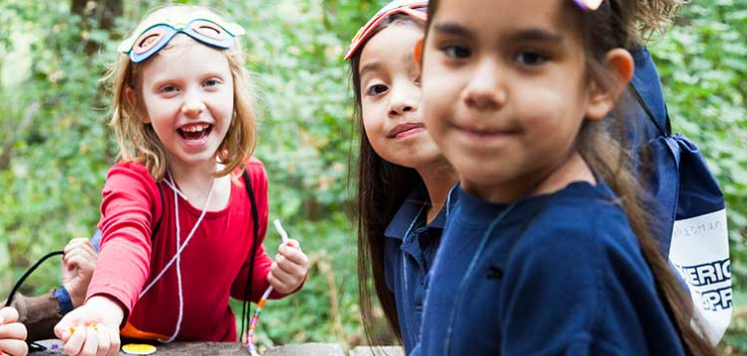In June 2014, I found myself in Lagos, Nigeria sitting across the table from a Ghanaian woman who was telling me her incredible story of the first time she ever used a computer. It was to play Pacman. But her computer usage was far more powerful than a game of eating pac-dots and avoiding pixelated enemies. Each time she played, she envisioned herself designing computer games and creating opportunities for other girls in Ghana to explore the computer world. Regina’s love for the computer inspired her to create her own foundation—Tech Needs Girls—to encourage young and marginalized girls in Ghana and throughout West Africa to become creators of technology as opposed to just users.
Regina’s story impacted me. I found myself thinking about my role as a creator—particularly my role in creating social change. At the time, I was working for an organization called Ashoka that finds and supports social entrepreneurs throughout the world. My trip to Nigeria was one of many in which I interviewed and met incredible human beings who were creating systems-change solutions to solve some of the world’s toughest problems. Throughout my time with Ashoka, I had a birds-eye view of these systemic solutions, and even more powerful, I was able to recognize trends across the Ashoka network of 3,000 leading social entrepreneurs. I often looked for trends in the way in which they were solving problems and tried to pinpoint the strategies that I saw a critical number of the social entrepreneurs implementing.
One strategy that I consistently saw was the need to organize differently and innovate within teams. The entrepreneurs recognized that neither they, nor their organization alone, would solve a complex social problem. They saw the need to align individuals and institutions from across sectors to come together with a shared vision and shared accountability. As I saw this trend unfolding, I couldn’t put a name to the strategy but I knew they were on to something. I knew not only was it a new way of collaborating, but it was the only way of collaborating for real and sustained social change.
I came to United Way of Salt Lake in June, 2016. After some life changes and a need to be back west, I found myself looking to join an organization that was creating systemic social change on a very local level. I was surprised to find myself drawn to United Way of Salt Lake, an organization that I had formerly thought of as a very traditional nonprofit that served as a funding mechanism in the community. As I started to learn more about the work and strategies of UWSL, however, I realized that what I was seeing and hearing felt very familiar. There were conversations around bringing multiple partners together, having a common agenda and shared goals, and continuous communication. I quickly realized that the strategy that UWSL was employing was something that I had seen often at Ashoka. It was called collective impact. It is what drew me to UWSL and helped me recognize the impressive work and impact of the organization.
There are five pillars of collective impact work:
- Create a common agenda of clearly defined objectives for community-level change
- Measure success by sharing data and being mutually accountable for results
- Align all resources and programs into mutually reinforcing strategies to support community-level results
- Operate in an environment of constant communication and continuous improvement
- A backbone support organization exists to facilitate conversations to guide vision, align strategies, support shared measurement, mobilize funding, and advance public policies
I am thrilled to be at United Way of Salt Lake as a Grants Manager, and strengthen our role as a backbone organization for collective impact work. We are learning and we are continuously improving. I am inspired each day by the conversations that we have here and the social change outcomes that we are striving to achieve. I look forward to diving into this work and recognizing the trends within collective impact.
Thinking back to my time spent with Regina in Nigeria, I continue to see myself as a creator. And the best way that I understand creating social change is through impactful collaborations of other creators that come together collectively with shared goals and with clear measures of success.


